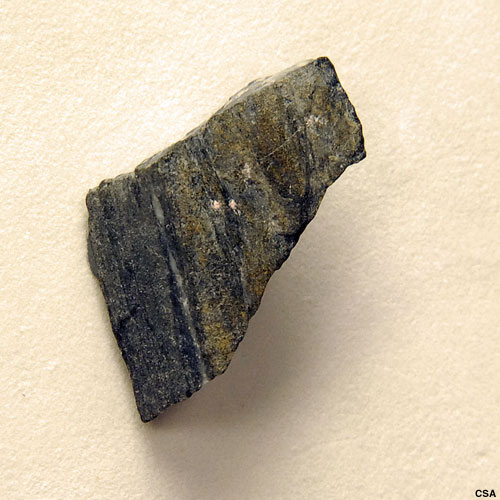|
Author
|
Topic: From Everest to Space... to Longueuil
|
Robert Pearlman
Editor Posts: 42981
From: Houston, TX
Registered: Nov 1999
|
 posted 04-17-2007 03:42 PM
posted 04-17-2007 03:42 PM
   
Canadian Space Agency release From Everest to Space... to LongueuilOn his last space mission, Canadian Space Agency (CSA) astronaut Steve MacLean took a small rock from the summit of Mount Everest (8,850 metres) with him as part of his Official Flying Kit. Contributor Bernard Voyer is one of Canada's greatest explorers and climbers. He was the first North American to climb the highest peaks of the seven continents and reach the world's two poles. On April 17, Steve MacLean will hand the rock back after a presentation by Voyer to CSA employees. MacLean mentioned the rock among his personal items aboard STS-115 as part of an interview with collectSPACE last year. For more about the Everest rock, see "A pebble from the summit of Everest" on Voyer's website.  |
MCroft04
Member Posts: 1634
From: Smithfield, Me, USA
Registered: Mar 2005
|
 posted 04-17-2007 07:46 PM
posted 04-17-2007 07:46 PM
   
Actually Steve is going to have to climb Mt. Chimborazo in the Andes to collect a rock from the "highest location on earth". Due to the earth's bulge at the equator, the peak of Mt Chimborazo is farther from the center of the earth than Mt Everest. While Everest is the highest peak from sea level, I believe Steve would have been closer to the top of Mt Chimborazo as he orbited the earth. |
LCDR Scott Schneeweis
New Member Posts:
From:
Registered:
|
 posted 04-18-2007 11:07 AM
posted 04-18-2007 11:07 AM
   
quote:
Originally posted by MCroft04:
Due to the earth's bulge at the equator, the peak of Mt Chimborazo is farther from the center of the earth than Mt Everest. While Everest is the highest peak from sea level, I believe Steve would have been closer to the top of Mt Chimborazo as he orbited the earth.
Contingent upon the Argument of Perigee which on shuttle missions (as well as ISS) infrequently is equatorial and goverened by the type of payload or mission being executed. It can also vary significantly throughout the flight depending on other factors (RAAN, eccentricity, etc.). |
Jurg Bolli
Member Posts: 977
From: Albuquerque, NM
Registered: Nov 2000
|
 posted 04-18-2007 01:17 PM
posted 04-18-2007 01:17 PM
   
Claude Nicollier took a piece of the Matterhorn up into orbit. |
MCroft04
Member Posts: 1634
From: Smithfield, Me, USA
Registered: Mar 2005
|
 posted 04-18-2007 09:02 PM
posted 04-18-2007 09:02 PM
   
quote:
Originally posted by LCDR Scott Schneeweis:
Contingent upon the Argument of Perigee which on shuttle missions (as well as ISS) infrequently is equatorial and governed by the type of payload or mission being executed.
I'll have to be honest and admit that I don't understand. Seems that the shuttle and ISS must pass over the equator on every orbit, but I'm sure that I'm missing something here. Can you point me to some reading that will educate me? |
LCDR Scott Schneeweis
New Member Posts:
From:
Registered:
|
 posted 04-18-2007 09:57 PM
posted 04-18-2007 09:57 PM
   
Yes the Shuttle passes over the equator (twice) each orbit but that orbit is not circular with respect to the earth (it is an ellipse closer to a true oval) and the closest point of approach (perigee) is not generally fixed at the equator unless the orbit is specifically designed to be so - i.e. equatorial/geostationary or special purpose satellites. Orbital characteristics are defined by Keplerian Elements (of which there are 6 noteworthy ones - up to 8 total) and are an artifact of launch vehicle inclination, velocity, the mass of the object being orbited, rotation of the earth ect. A google search of Keplerian Elements/Orbital Elements should bring up good tutorials. |
MCroft04
Member Posts: 1634
From: Smithfield, Me, USA
Registered: Mar 2005
|
 posted 04-19-2007 05:37 AM
posted 04-19-2007 05:37 AM
   
Thanks Scott; that makes it clear. I'll look for the tutorials. |












